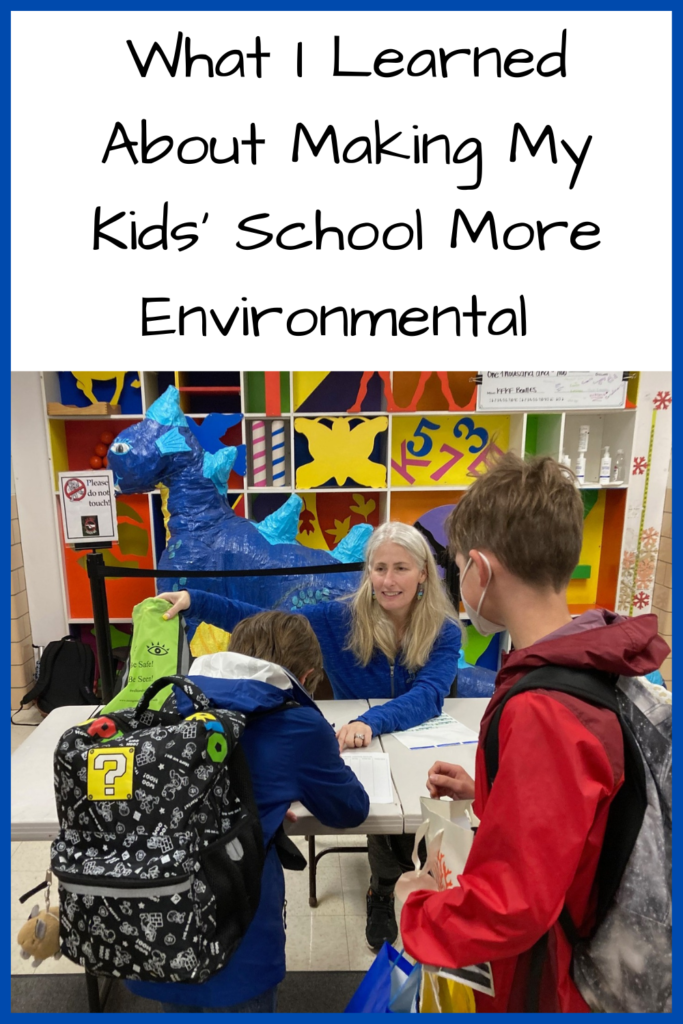
“31 students, that’s pretty good, considering the weather!” I breathed a sigh of relief looking at the sign-in sheet for our school’s first Bike to School Day. It wasn’t torrential rain, but I was worried that even the gray drizzle would be enough to warn people off. But we had a full bike rack and a number of happy kids with Safe Routes to School goodie bags.
The event was a result of a few months of direct work, but even more organizing time before that. This was the first year I had truly been involved in organizing at my kids’ school. Even though I wrote in my book about how to make your kids’ school more environmentally friendly, it was all based on expert interviews, not personal experience.
In working with our school and school district this year, I learned quite a few things first-hand about general advocacy in schools and bike advocacy specifically.
Build trust and relationships first
Bike to School Day wouldn’t have been nearly as successful if I had gone to the school a few months before and announced that I wanted to organize it. Instead, I started by going to the PTA meeting at the beginning of the year and introducing myself as a bicycle advocate. Our principal already knew who I was, but this set me up as an expert in bike-related issues. It also gave me the opportunity to introduce myself to the PTA President, which came in handy when I needed her to promote Bike to School Day through the PTA mailing list.
Ask people what issues they see
Besides meeting people, one of the main reasons I wanted to attend the PTA meeting was to ask other parents what their concerns and barriers were to having their kids bike to school. I knew certain pain points from biking my own kids to school, but also knew that I only covered one route. Other parents were able to let me know about traffic and dangerous intersections in other places.
Connect schools with existing resources
If you’re going to work with your school to be more environmentally sustainable (or anything else), try to bring expertise to the table. I’ve been part of our city’s bicycle advisory committee for years, so I personally know the city’s bicycle and pedestrian coordinator as well as what resources the city can offer. So when our principal said that we needed a new bike rack, I was able to say, “Oh, the city can help with that!” and make that connection. I also took all of the comments that people made about traffic and safety and compiled them into a spreadsheet to pass on to the city coordinator. He’s taking those into account as we’re working to implement our city’s Bicycle Master Plan and finalize our Vision Zero plan (a plan to eliminate deaths and serious injuries from transportation). I was also able to obtain resources for Bike to School Day from both the city and our county’s Safe Routes to School coordinator.
Recruit allies within the school
There was no way I could organize Bike to School Day by myself. All of the promotional channels were run by people in the school, from flyers in folders to bulletin boards to the weekly school email. Besides the principal, I also reached out to a teacher who said she was interested in biking. She was able to distribute flyers, make a bulletin board, stuff goodie-bags, and staff the check-in table.
Know that it’s going to be a long process, especially for culture shifts
I was thrilled this fall when I saw more than 30 kids had biked in on a nice day! The bike rack was stuffed – hence the need for a new one. But this spring, biking in has been much less popular. I suspect a number of parents had their kids bike in during the fall instead of taking the bus. (That’s why we started.) Then, once the weather got cold, they sent them on the bus or drove them in and never went back to biking. Despite that, I’m still encouraged. That means that people know their kids can ride in and a few tweaks might make it possible to start riding in again. Events like Bike to School Day also help show people what’s possible. Culture change is a long, slow process. Be patient with yourself and that process.
Working with your school on sustainability activities can be incredibly rewarding – but also draining. Figure out where you can use your time and energy most effectively and good luck!